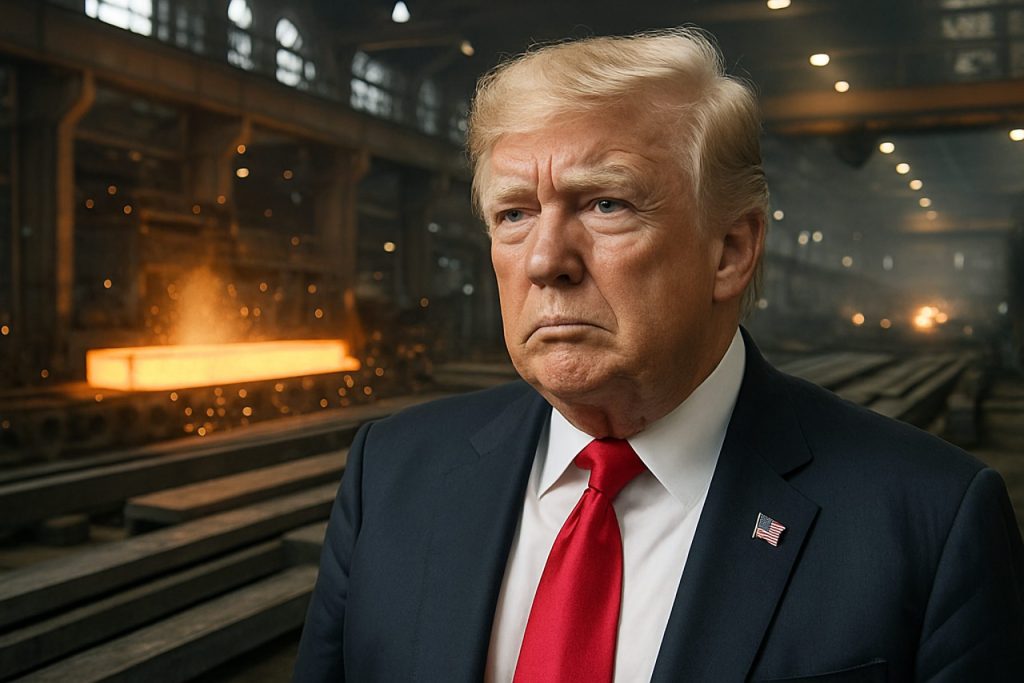
Trump’s Shock 50% Steel Tariffs: How They Could Reshape the US Economy—and the World
The US just doubled down on steel and aluminum tariffs. Discover what this dramatic move means for global trade in 2025 and beyond.
- 50% Tariffs: New US tariffs on steel and aluminum start June 4, 2025
- Trade War Escalation: Previous levies were just 25%, now doubled
- UK Exception: Tariffs stay at 25% for UK, thanks to a new trade deal
- Global Impact: US is the world’s largest steel importer
In a stunning escalation of his global trade war, former President Donald Trump signed an executive order Tuesday unleashing 50% tariffs on foreign steel and aluminum. These tariffs, set to take effect June 4, are double the previous 25% duties and signal a sharp new era for US economic policy.
For businesses, workers, and global leaders, the stakes are high. Trump’s order insists these harsh measures are needed to combat a wave of cheap foreign metal that threatens US industry and national security. The move comes even as elements of his wider trade agenda remain tangled in court battles—a recent ruling deemed some earlier tariffs illegal.
The US, the world’s top steel importer, now draws a tougher line, with nations from China to Germany forced to reassess their access to American markets. But UK exporters will breathe easy: a newly minted transatlantic deal keeps their steel and aluminum tariffs steady at 25%.
Why Is the US Doubling Down on Steel Tariffs Now?
Surging imports and an economic nationalism wave are pushing Washington’s policy levers hard in 2025. Trump—and his allies—say foreign steel producers continue to “dump” low-cost, excess metal in the US, undercutting domestic manufacturers and risking jobs.
Soaring global production, especially from countries like China, has created record surpluses. US officials argue these surpluses flood the market, threatening not only steelworkers but key sectors tied to America’s infrastructure and defense.
Despite pushback from trading partners and ongoing legal uncertainty, the administration is advancing what it calls a “pro-American” fix. Check the developing coverage at White House and stay tuned to updates from Reuters.
How Will the New Steel Tariffs Affect Your Business?
If you work in manufacturing, construction, or any industry dependent on steel or aluminum, expect to feel ripple effects quickly. Prices for raw materials could surge, squeezing profit margins and potentially raising costs for consumers.
Manufacturers sourcing material from abroad may now turn to domestic suppliers, shifting supply chains and possibly sparking a new wave of investment in US mills. But importers and global firms could face tough decisions about relocating operations or passing on added costs.
- Costs for metal-dependent products—from cars to appliances—are likely to rise
- Small manufacturers may seek new supply agreements or renegotiate contracts
- Exporters brace for retaliation, as affected countries rethink their own tariffs
For ongoing reactions, follow updates from leaders at American Iron and Steel Institute and monitor business coverage at Wall Street Journal.
Q&A: What Do Experts Say About the New Tariffs?
Q: Will the tariffs really protect US steel jobs?
Analysts predict some domestic jobs may be saved short-term as local producers gain a cost edge. However, higher material prices could threaten jobs in sectors that rely heavily on affordable steel and aluminum.
Q: How might global markets respond?
Major steel exporters, including China, South Korea, and Brazil, are expected to lodge formal complaints at the World Trade Organization and may retaliate with their own tariffs on US goods.
Q: What’s next for legal challenges?
Courts may continue to tussle over the scope of executive power on trade. Expect further legal wrangling in 2025, with major cases likely to influence the direction of US import policy.
How Can US Companies Prepare for Higher Tariffs in 2025?
Businesses should audit their supply chains now, seeking alternative sourcing from domestic or exempted countries such as the UK. It’s crucial to monitor contract terms, seek input from trade lawyers, and consider hedging price risks.
Industry experts recommend:
- Review all supplier contracts for tariff exposure
- Invest in domestic sourcing where possible
- Consult trade specialists for compliance guidance
- Track updates from official sources and industry associations
Stay Ahead as Trade Wars Escalate — Prepare Today!
Action Checklist:
- Review your steel and aluminum sourcing by June 4, 2025
- Assess product pricing strategies
- Monitor legal updates and international trade news
- Engage with industry advisors for insights
- Communicate tariff impacts to stakeholders early



